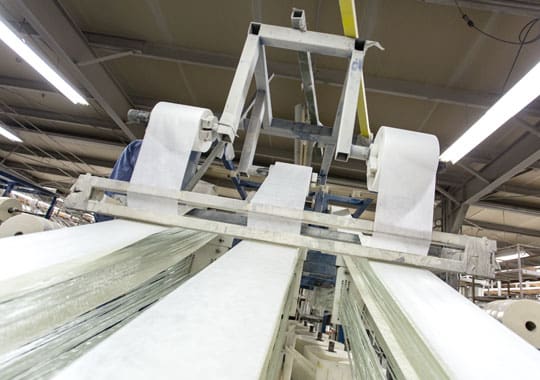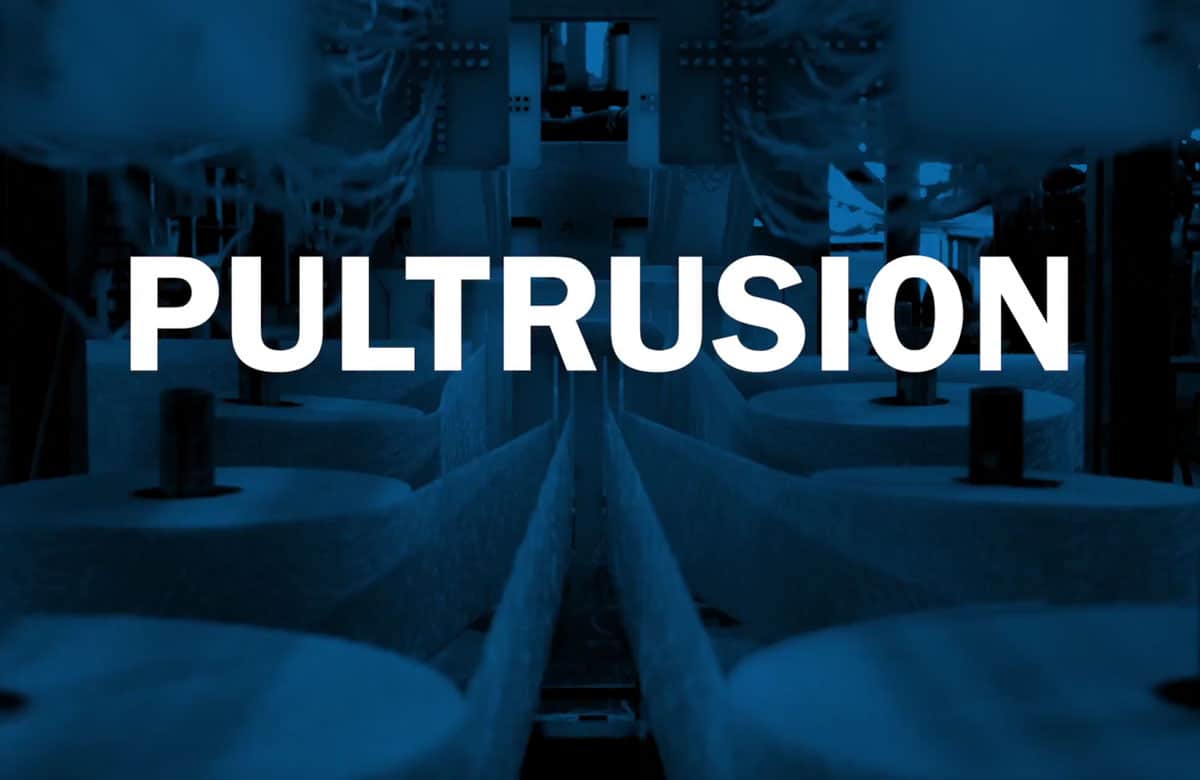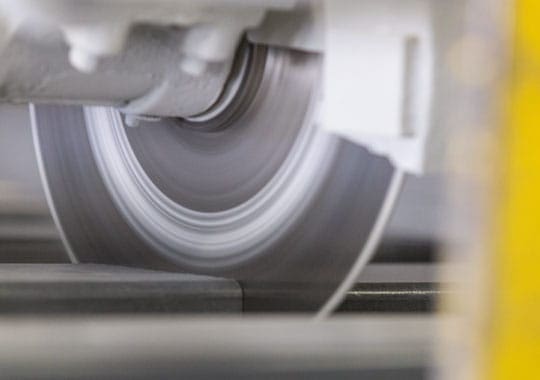1Reinforcement

The process typically starts by pulling in two forms of fiberglass reinforcement. Creels of fiberglass roving provide unidirectional strength along the length of the profile, and rolls of woven fiberglass mat provide multidirectional reinforcement. All reinforcements are fed through pre-forming guides that will begin to shape the raw glass fibers into the finished profile.




